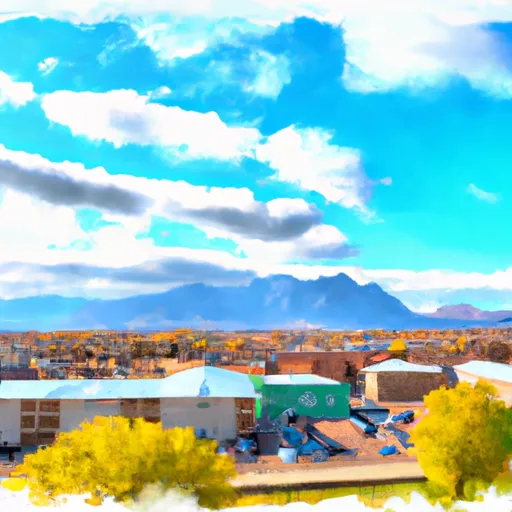-
 Snoflo Premium
Snoflo Premium
Get unlimited access to all our content
With no Ad interruptions! - Start Your Free Trial Login with existing account
Portage
Eden Index
Climate
8.5
•
Recreation
2.5
•
Community
•
Safeguard
4.3/10

Portage, Utah is a small town located in Box Elder County. It experiences a semi-arid climate with hot summers and cold winters. Summers are typically dry and hot, with temperatures often exceeding 90°F (32°C). Winters are cold and snowy, with temperatures dropping below freezing. Precipitation is relatively low throughout the year, with most rainfall occurring in the spring and fall.
Hydrologically, Portage lies near the Bear River, which is the largest river in Utah and an important water source for the region. The river provides opportunities for fishing, boating, and other water activities. Additionally, the area surrounding Portage is dotted with small lakes and reservoirs that offer fishing and recreational boating opportunities.
In terms of outdoor recreation, Portage is surrounded by scenic mountains and valleys, providing ample opportunities for hiking, camping, and wildlife viewing. The nearby Bear River Migratory Bird Refuge attracts birdwatchers from around the country. The area also offers hunting opportunities for big game, such as deer and elk, attracting outdoor enthusiasts during the hunting season.
Overall, Portage, Utah offers a diverse range of outdoor recreational activities, beautiful natural landscapes, and access to the Bear River for water-based activities.
What is the Eden Index?
The Snoflo Eden Index serves as a comprehensive rating system for regions, evaluating their desirability through a holistic assessment of climate health, outdoor recreation opportunities, and natural disaster risk, acknowledging the profound impact of these factors on livability and well-being.
Climate Health Indicator (CHI): 8.5
Portage receives approximately
553mm of rain per year,
with humidity levels near 64%
and air temperatures averaging around
8°C.
Portage has a plant hardyness factor of
6, meaning
plants and agriculture in this region thrive during a short period during spring and early summer. Most
plants will die off during the colder winter months.
By considering the ideal temperature range, reliable water supplies, clean air, and stable seasonal rain or snowpacks, the Climate Health Indicator (CHI) underscores the significance of a healthy climate as the foundation for quality living.
A healthy climate is paramount for ensuring a high quality of life and livability in a region, fostering both physical well-being and environmental harmony. This can be characterized by ideal temperatures, reliable access to water supplies, clean air, and consistent seasonal rain or snowpacks.
Weather Forecast
Streamflow Conditions
Lower Bear
Area Rivers
Lower Bear
Snowpack Depths
Lower Bear
Reservoir Storage Capacity
Lower Bear
Groundwater Levels
Recreational Opportunity Index (ROI): 2.5
The Recreational Opportunity Index (ROI) recognizes the value of outdoor recreational options, such as parks, hiking trails, camping sites, and fishing spots, while acknowledging that climate plays a pivotal role in ensuring the comfort and consistency of these experiences.
Access to outdoor recreational opportunities, encompassing activities such as parks, hiking, camping, and fishing, is crucial for overall well-being, and the climate plays a pivotal role in enabling and enhancing these experiences, ensuring that individuals can engage in nature-based activities comfortably and consistently.
Camping Areas
| Campground | Campsites | Reservations | Toilets | Showers | Elevation |
|---|---|---|---|---|---|
| Dry Canyon | 3 | 6,314 ft | |||
| Malad Summit | 11 | 6,216 ft |
Nearby Ski Areas
Catastrophe Safeguard Index (CSI):
The Catastrophe Safeguard Index (CSI) recognizes that natural disaster risk, encompassing floods, fires, hurricanes, and tornadoes, can drastically affect safety and the overall appeal of an area.
The level of natural disaster risk in a region significantly affects safety and the overall livability, with climate change amplifying these risks by potentially increasing the frequency and intensity of events like floods, fires, hurricanes, and tornadoes, thereby posing substantial challenges to community resilience and well-being.
Community Resilience Indicator (CRI):
The Community Resilience Indicator (CRI) recognizes that education, healthcare, and socioeconomics are crucial to the well-being of a region. The CRI acknowledges the profound impact of these elements on residents' overall quality of life. By evaluating educational resources, healthcare accessibility, and economic inclusivity, the index captures the essential aspects that contribute to a thriving community, fostering resident satisfaction, equity, and social cohesion.

